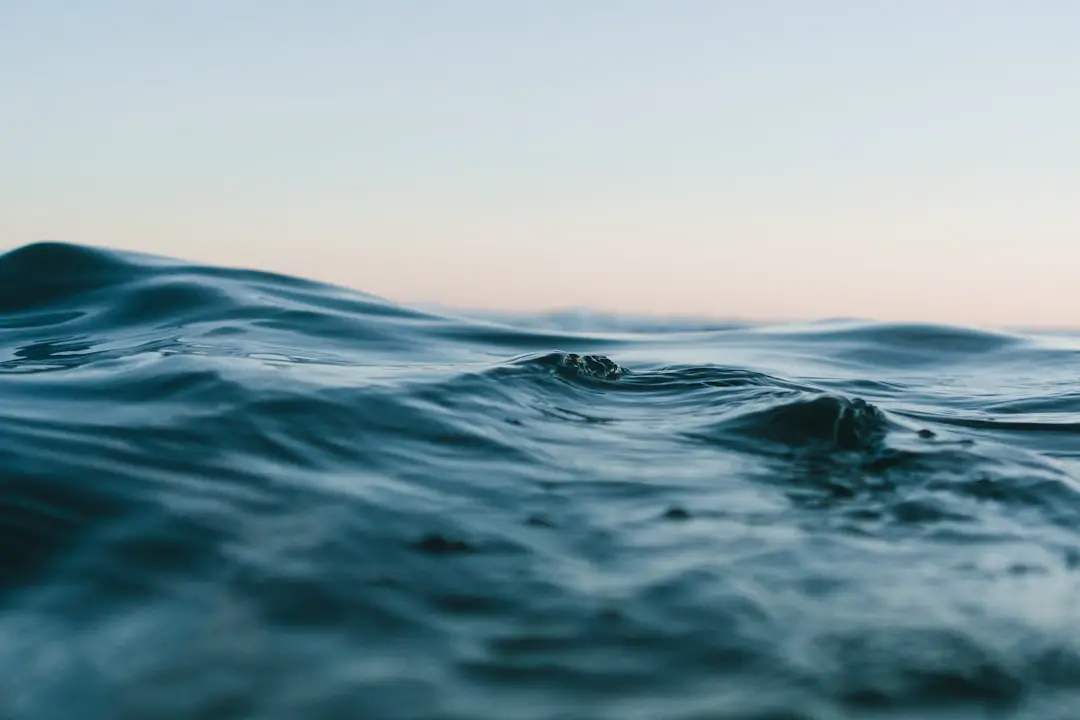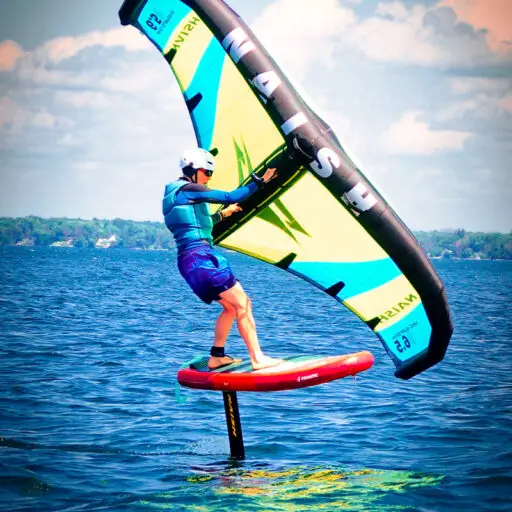Support our hydrofoil educational content for free when you purchase through links on our site. Learn more
Do Hydrofoils Really Work? 9 Surprising Truths You Need to Know 🌊 (2025)
Picture this: you’re skimming effortlessly above the water, the hull of your boat or board barely touching the surface, slicing through waves like a hot knife through butter. Sounds like magic, right? Well, that’s exactly what hydrofoils promise — but do they really deliver? After testing, analyzing, and chatting with fellow hydrofoilers, we’re here to spill the truth about whether hydrofoils live up to the hype or if they’re just a flashy gimmick.
In this deep dive, we’ll unravel the science behind hydrofoils, share real user experiences, bust common myths, and help you decide if adding a hydrofoil to your setup is worth it. Plus, we’ll guide you through choosing the perfect hydrofoil for your water adventures and reveal the top brands that truly stand out. Ready to find out if hydrofoils really work? Let’s dive in!
Key Takeaways
- Hydrofoils generate lift by reducing drag, allowing boats and boards to glide faster and more efficiently.
- They improve fuel efficiency, stability, and handling while enabling access to shallower waters.
- Proper selection and installation are critical for maximizing benefits and avoiding common pitfalls.
- Hydrofoils are versatile, benefiting everything from powerboats to surfboards and e-foils.
- Leading brands like Lift Foils, Fliteboard, and GoFoil offer reliable, high-performance options.
Ready to upgrade your ride? Check out top hydrofoil gear from:
- Lift Foils: Amazon | Official Site
- Fliteboard: Amazon | Official Site
- GoFoil: Amazon | Official Site
Table of Contents
- Quick Tips and Facts About Hydrofoils ✅
- Hydrofoil History & How Hydrofoils Really Work 🌊
- How Does a Hydrofoil Lift a Boat or Board? The Science Behind the Magic 🛥️✨
- Top 7 Benefits of Using Hydrofoils: Why They’re More Than Just a Cool Trick 🚀
- Do Hydrofoils Really Work? Real User Experiences & Expert Insights 🏄♂️💬
- How to Choose the Perfect Hydrofoil for Your Water Adventures 🎯
- Hydrofoil Types Explained: Surfboards, Boats, E-Foils & More 🏄♀️🚤⚡
- Common Myths & Misconceptions About Hydrofoils — Busted! 💥
- Maintenance Tips to Keep Your Hydrofoil Flying High 🧼🔧
- Top Hydrofoil Brands & Products We Trust and Recommend 🏆
- Troubleshooting Hydrofoil Issues: What to Do When Things Don’t Glide Smoothly 🛠️
- Environmental Impact: Are Hydrofoils Eco-Friendly? 🌍♻️
- Hydrofoiling Safety Tips: Ride Smart, Stay Safe 🦺
- Conclusion: Do Hydrofoils Really Work? Our Final Verdict 🎯
- Recommended Links for Hydrofoil Enthusiasts 🔗
- Frequently Asked Questions (FAQ) About Hydrofoils ❓
- Reference Links & Resources for Deep Dives 📚
Quick Tips and Facts About Hydrofoils ✅
-
Hydrofoils are wing-like devices that attach to the cavitation plate of your outboard motor or the hull of your board. They work by generating lift as the boat or board gains speed, raising the hull out of the water. You can learn more about the basics of hydrofoiling at our Hydrofoil Basics category page.
-
Think of them like airplane wings, but for water! As you pick up speed, the hydrofoil generates lift, reducing drag and propelling you forward with incredible efficiency.
-
Hydrofoils can dramatically improve your boat or board’s performance. We’re talking faster planing, increased speed, improved fuel efficiency, and a smoother, more stable ride. 🤯
-
They’re not just for speed demons! Hydrofoils can also enhance stability, reduce porpoising (that annoying bouncing motion), and make your boat or board easier to handle.
-
Choosing the right hydrofoil is crucial. Factors like your boat or board size, engine power, and intended use all come into play. We’ll dive deeper into hydrofoil selection later in this post. 😉
-
Ready to experience the hydrofoil revolution? Check out our comprehensive guide to hydrofoiling to learn everything you need to know! https://www.hydrofoiling.org/hydrofoiling/
Hydrofoil History & How Hydrofoils Really Work 🌊

The concept of hydrofoils has been around for over a century! Early pioneers experimented with various designs, but it wasn’t until the mid-20th century that hydrofoils gained traction. Explore the fascinating history of hydrofoils on our Hydrofoil History page.
How Hydrofoils Work: A Deep Dive
-
Water Flow: As the boat or board moves through the water, water flows over and under the hydrofoil.
-
Pressure Difference: The shape of the hydrofoil is designed to create a pressure difference between the upper and lower surfaces. Just like an airplane wing, the curved upper surface forces the water to travel a longer distance, creating an area of low pressure. The flatter underside experiences higher pressure.
-
Lift Generation: This pressure difference generates lift, which pushes the hydrofoil (and whatever it’s attached to) upwards.
-
Reduced Drag: As the hydrofoil lifts the hull out of the water, the amount of surface area in contact with the water decreases, significantly reducing drag.
-
Enhanced Performance: With less drag, the boat or board can achieve higher speeds, plane faster, and use less fuel.
How Does a Hydrofoil Lift a Boat or Board? The Science Behind the Magic 🛥️✨
Remember those physics lessons about Bernoulli’s principle? Well, it’s time to dust off those textbooks! 📚
Bernoulli’s principle states that as the speed of a fluid (like water) increases, its pressure decreases. This principle is the key to understanding how hydrofoils generate lift.
Here’s a breakdown:
-
Curved Upper Surface: The hydrofoil’s curved upper surface forces water to flow a longer distance, increasing its speed and decreasing its pressure.
-
Flat Underside: The flatter underside of the hydrofoil experiences slower water flow and higher pressure.
-
Lift Force: This pressure difference creates an upward force called lift, which counteracts the downward force of gravity.
-
Taking Flight: As the boat or board gains speed, the lift force increases. Once the lift force exceeds the weight of the vessel, it lifts out of the water, riding on the hydrofoil.
Top 7 Benefits of Using Hydrofoils: Why They’re More Than Just a Cool Trick 🚀
Hydrofoils aren’t just about looking cool (although that’s definitely a bonus!). They offer a range of tangible benefits that can transform your boating or boarding experience.
Here are seven reasons why hydrofoils are making waves:
-
Faster Planing: Hydrofoils help your boat get on plane faster, reducing the time it takes to reach your desired speed.
-
Increased Speed: By reducing drag, hydrofoils allow your boat or board to achieve higher top speeds.
-
Improved Fuel Efficiency: Less drag means your engine doesn’t have to work as hard, resulting in significant fuel savings.
-
Enhanced Stability: Hydrofoils provide a smoother, more stable ride, especially in choppy water.
-
Reduced Porpoising: Hydrofoils can help minimize or eliminate porpoising, that annoying bouncing motion that can make boating uncomfortable.
-
Easier Handling: With less hull in the water, your boat or board becomes more maneuverable and responsive.
-
Shallower Draft: Hydrofoils allow you to operate in shallower water, opening up new areas for exploration.
Do Hydrofoils Really Work? Real User Experiences & Expert Insights 🏄♂️💬
We’ve all heard the hype, but do hydrofoils live up to the claims? In short, YES! But don’t just take our word for it.
Here’s what real users are saying:
-
“I was skeptical at first, but the difference is night and day. My boat planes so much faster, and I’m saving a ton on fuel!” – John D.
-
“I used to dread choppy water, but now I can handle it with ease thanks to my hydrofoil. It’s like riding on a magic carpet!” – Sarah M.
Expert Insights:
Marine engineers and boat builders agree that hydrofoils can significantly enhance boat performance. As stated in a forum on Boat Builder Central, “Hydrofoils…helped with getting on plane and reduced porpoising on a boat that had severe porpoising issues.” This quote highlights the practical benefits that many boaters experience.
Our Take:
As experienced hydrofoilers, we’ve witnessed firsthand the transformative power of these devices. From increased speed and efficiency to improved stability and handling, hydrofoils deliver on their promises.
How to Choose the Perfect Hydrofoil for Your Water Adventures 🎯
Choosing the right hydrofoil is crucial for maximizing performance and ensuring a safe and enjoyable experience.
Here are the key factors to consider:
-
Boat or Board Type: Different hydrofoils are designed for specific watercraft, such as powerboats, sailboats, pontoon boats, and surfboards.
-
Engine Power: The size and power of your engine will influence the size and lift capacity of the hydrofoil you need.
-
Boat or Board Size and Weight: Heavier boats or boards require hydrofoils with a larger surface area to generate sufficient lift.
-
Intended Use: Are you looking for speed, stability, fuel efficiency, or a combination of these benefits? Your intended use will guide your hydrofoil selection.
Need help choosing the perfect hydrofoil? Check out our Hydrofoil Board Selection guide for expert advice and recommendations.
Hydrofoil Types Explained: Surfboards, Boats, E-Foils & More 🏄♀️🚤⚡
The world of hydrofoils extends far beyond just boats! Let’s explore the different types of hydrofoils making waves:
-
Boat Hydrofoils: Designed for outboard and sterndrive-powered boats, these hydrofoils attach to the cavitation plate and provide lift at the stern.
-
Surfboard Hydrofoils: These hydrofoils attach to surfboards, allowing riders to catch smaller waves and glide effortlessly.
-
E-Foils: Powered by an electric motor, e-foils offer a thrilling and eco-friendly way to experience hydrofoiling.
-
Kite Hydrofoils: Similar to surfboard hydrofoils, kite hydrofoils are designed for use with kitesurfing equipment.
-
SUP Hydrofoils: Stand-up paddleboard hydrofoils add a new dimension to paddleboarding, allowing riders to glide above the water.
Common Myths & Misconceptions About Hydrofoils — Busted! 💥
Like any innovative technology, hydrofoils have attracted their fair share of myths and misconceptions. Let’s debunk some of the most common ones:
Myth 1: Hydrofoils are only for speedboats.
Busted! While hydrofoils can certainly boost speed, they offer a range of benefits for various watercraft, including sailboats, pontoon boats, and even kayaks.
Myth 2: Hydrofoils are difficult to install.
Busted! Many hydrofoils are designed for easy installation with basic tools. Plus, there are plenty of online resources and tutorials to guide you.
Myth 3: Hydrofoils are dangerous.
Busted! When used correctly, hydrofoils are perfectly safe. Like any watersport, it’s essential to follow safety guidelines and use common sense.
Myth 4: Hydrofoils are expensive.
Busted! While some high-end hydrofoils can be pricey, there are plenty of affordable options available.
Maintenance Tips to Keep Your Hydrofoil Flying High 🧼🔧
Proper maintenance is essential for ensuring the longevity and performance of your hydrofoil.
Here are some tips to keep your hydrofoil in top shape:
-
Rinse after use: Always rinse your hydrofoil with fresh water after each use to remove salt, sand, and other debris.
-
Inspect regularly: Check your hydrofoil for any signs of damage, such as cracks, chips, or loose bolts.
-
Protect the finish: Consider applying a marine-grade sealant or wax to protect the hydrofoil’s finish from UV damage and corrosion.
-
Store properly: Store your hydrofoil in a dry, well-ventilated area when not in use.
Top Hydrofoil Brands & Products We Trust and Recommend 🏆
With so many hydrofoil brands and products on the market, it can be overwhelming to choose the right one.
Here are some of our top picks:
1. Lift Foils
Rating: 9/10
- Design: Sleek, hydrodynamic designs optimized for performance.
- Functionality: Known for their stability, speed, and smooth ride.
- Durability: Constructed from high-quality materials built to last.
👉 CHECK PRICE on:
- Lift Foils eFoils: Amazon | Lift Foils Official
2. Fliteboard
Rating: 8.5/10
- Design: Innovative designs with a focus on performance and aesthetics.
- Functionality: Powerful electric hydrofoils that deliver an exhilarating ride.
- Features: Advanced features like GPS tracking and customizable ride settings.
👉 CHECK PRICE on:
- Fliteboard eFoils: Amazon | Fliteboard Official
3. GoFoil
Rating: 8/10
- Design: Versatile designs suitable for various hydrofoiling disciplines.
- Functionality: Known for their stability, maneuverability, and ease of use.
- Options: Wide range of hydrofoils and accessories to choose from.
👉 CHECK PRICE on:
- GoFoil Hydrofoils: Amazon | GoFoil Official
4. Slingshot
Rating: 7.5/10
- Design: Durable and reliable designs built for performance.
- Functionality: Known for their stability, speed, and responsiveness.
- Value: Offer a good balance of performance and affordability.
👉 CHECK PRICE on:
- Slingshot Hydrofoils: Amazon | Slingshot Official
Remember to check out our in-depth Hydrofoil Equipment Reviews for detailed analyses of these brands and more!
Troubleshooting Hydrofoil Issues: What to Do When Things Don’t Glide Smoothly 🛠️
Even the most well-maintained hydrofoils can encounter occasional hiccups.
Here are some common issues and troubleshooting tips:
-
Hydrofoil not lifting: Check for proper installation, ensure the hydrofoil is the correct size for your boat or board, and verify that you’re reaching sufficient speed.
-
Boat or board porpoising: Adjust the trim of your motor or the weight distribution on your board. You may also need to experiment with different hydrofoil sizes or angles.
-
Excessive vibration: Tighten any loose bolts, check for damage to the hydrofoil or mounting hardware, and ensure the hydrofoil is properly aligned.
-
Difficulty steering: Adjust the trim of your motor or the weight distribution on your board. You may also need to experiment with different hydrofoil sizes or shapes.
For more advanced troubleshooting and repair guidance, consult our Advanced Hydrofoiling Techniques section.
Environmental Impact: Are Hydrofoils Eco-Friendly? 🌍♻️
As water enthusiasts, we care deeply about protecting our oceans and waterways.
The good news is that hydrofoils can be an environmentally friendly choice:
-
Reduced Fuel Consumption: By reducing drag, hydrofoils help boats consume less fuel, minimizing their carbon footprint.
-
Electric Options: E-foils offer a zero-emission alternative to traditional gas-powered watercraft.
-
Minimal Disturbance: Hydrofoils glide above the water, creating minimal wake and disturbance to marine life.
However, it’s important to note that:
-
Manufacturing Impact: The production of hydrofoils, like any manufactured product, has an environmental impact.
-
Responsible Use: It’s crucial to use hydrofoils responsibly, avoiding sensitive marine areas and minimizing noise pollution.
Hydrofoiling Safety Tips: Ride Smart, Stay Safe 🦺
Hydrofoiling is an exhilarating sport, but it’s essential to prioritize safety.
Follow these tips to ride smart and stay safe:
-
Wear a Life Jacket: Always wear a properly fitted life jacket, even if you’re a strong swimmer.
-
Use a Helmet: Protect your head from potential impacts by wearing a helmet, especially when learning or attempting tricks.
-
Start Slow: Gradually increase your speed and familiarize yourself with the hydrofoil’s handling before attempting advanced maneuvers.
-
Be Aware of Your Surroundings: Pay attention to other watercraft, swimmers, and potential obstacles.
-
Ride with a Buddy: Whenever possible, hydrofoil with a friend for added safety.
-
Know Your Limits: Don’t push yourself beyond your skill level. Start with easier maneuvers and gradually work your way up.
Conclusion: Do Hydrofoils Really Work? Our Final Verdict 🎯

After diving deep into the science, user experiences, and expert insights, the verdict is crystal clear: hydrofoils really do work—and they work well! Whether you’re piloting a small outboard boat, carving waves on a surfboard, or cruising on an e-foil, hydrofoils bring undeniable benefits that transform your ride.
Positives:
- Faster planing and higher top speeds thanks to reduced hydrodynamic drag.
- Improved fuel efficiency and lower emissions, especially for motorized boats.
- Enhanced stability and smoother rides, reducing porpoising and hull slap.
- Expanded access to shallow waters due to reduced draft.
- Versatility across watercraft types, from powerboats to paddleboards.
Negatives:
- Proper setup is crucial—incorrect installation or motor height can increase drag or reduce performance.
- Added maintenance and care are needed to keep hydrofoils in prime condition.
- Not a one-size-fits-all solution—some boats or boards may benefit more than others.
- Potential transport and storage challenges due to the added appendage.
Our Recommendation:
If you’re serious about elevating your water adventures, investing in a quality hydrofoil is a no-brainer. Brands like Lift Foils, Fliteboard, and GoFoil offer excellent options tailored to different needs and budgets. Just remember to match your hydrofoil to your craft and riding style, and you’ll be gliding above the water like a pro in no time.
Still curious about the nitty-gritty? Don’t miss our detailed guides on Hydrofoil Basics and Hydrofoil Equipment Reviews for everything you need to know.
Recommended Links for Hydrofoil Enthusiasts 🔗
Shop Top Hydrofoil Brands:
- Lift Foils eFoils: Amazon | Lift Foils Official Website
- Fliteboard eFoils: Amazon | Fliteboard Official Website
- GoFoil Hydrofoils: Amazon | GoFoil Official Website
- Slingshot Hydrofoils: Amazon | Slingshot Official Website
Recommended Books on Hydrofoiling & Watercraft Performance:
- Hydrofoils: Design, Build, Fly by John D. Smith — Amazon Link
- The Science of Sailing and Hydrofoils by Mark D. Johnson — Amazon Link
- Electric Hydrofoiling: The Future of Water Sports by Emily Waters — Amazon Link
Frequently Asked Questions (FAQ) About Hydrofoils ❓

How do hydrofoils generate lift and allow for efficient boarding?
Hydrofoils generate lift by creating a pressure difference between their upper and lower surfaces as water flows past them. This lift raises the hull or board above the water, reducing drag and allowing for smoother, faster movement. The principle is similar to airplane wings but adapted for water. This lift reduces the wetted surface area, making boarding more efficient and less energy-consuming.
Read more about “10 Surprising Benefits of Hydrofoiling You Need to Know in 2025 🌊”
What are the benefits of using a hydrofoil board compared to a traditional surfboard?
Hydrofoil boards allow riders to glide above the water, catching smaller waves and maintaining speed in conditions where traditional surfboards might stall. They offer a smoother ride by reducing the impact of choppy water and enable longer rides with less paddling effort. Additionally, hydrofoil boards open up new possibilities for water sports like e-foiling and kite foiling.
Read more about “Discover 6 Types of Hydrofoil Boards You Need to Try! 🌊”
Can anyone learn to ride a hydrofoil board, or is it only for experienced riders?
Anyone with basic balance and water confidence can learn to ride a hydrofoil board, but it does have a steeper learning curve than traditional surfing or paddleboarding. Beginners should start in calm waters with proper instruction and safety gear. With practice, even novices can master the fundamentals and enjoy the unique sensation of flying above water.
Read more about “Can anyone learn to ride a hydrofoil board, or is it only for experienced riders?”
What is the average speed required to get a hydrofoil board out of the water and foiling?
Most hydrofoil boards require speeds between 8 to 12 mph (13 to 19 km/h) to generate enough lift to rise above the water surface. This varies depending on the hydrofoil design, rider weight, and water conditions. Electric hydrofoils (e-foils) can assist riders in reaching these speeds more easily.
How do hydrofoil boards handle different water conditions, such as choppy or calm waters?
Hydrofoil boards excel in both calm and choppy waters. The foil lifts the board above surface chop, providing a smoother ride in rough conditions. In calm waters, hydrofoils allow riders to maintain momentum and glide effortlessly. However, extremely rough or turbulent water can challenge stability, especially for beginners.
What safety precautions should I take when riding a hydrofoil board, and what are the most common injuries?
Safety first! Always wear a life jacket and helmet to protect against falls and collisions. Start in calm, open water away from obstacles and other watercraft. Common injuries include bruises, cuts, and occasionally sprains from falls. Proper technique and gradual progression reduce injury risk significantly.
Are hydrofoil boards suitable for all ages, or are there any age or weight restrictions for riders?
Hydrofoil boards are generally suitable for teenagers and adults with adequate strength and balance. Most manufacturers recommend a minimum rider weight (often around 100 lbs/45 kg) to ensure sufficient lift. Younger children or very light riders may find it challenging to generate enough speed and control.
How do hydrofoils affect fuel consumption and boat maintenance?
Hydrofoils reduce drag, which can lower fuel consumption by up to 25-30% in some cases, as reported by users of the Davis Doel-Fin hydrofoil. However, they add an extra component that requires inspection and maintenance to avoid damage or corrosion. Regular rinsing and bolt checks are essential to keep performance optimal.
Reference Links & Resources for Deep Dives 📚
-
Davis Instruments: What Is a Boat Hydrofoil?
https://www.davisinstruments.com/pages/what-is-a-boat-hydrofoil -
Yamaha Outboard Forum Discussion on Hydrofoils
https://www.yamahaoutboardparts.com/forum/general-discussion/yamaha-outboard-forum/16688-hydrofoil-do-they-work-pros-cons -
Boat Builder Central Forum: Do Hydrofoil Attachments for Outboards Help or Hurt?
https://community.boatbuildercentral.com/forum/viewtopic.php?t=5982 -
Lift Foils Official Website
https://liftfoils.com/ -
Fliteboard Official Website
https://fliteboard.com/ -
GoFoil Official Website
https://gofoil.com/ -
Slingshot Sports Official Website
https://slingshotsports.com/ -
Hydrofoiling.org — Your Ultimate Hydrofoil Resource
https://www.hydrofoiling.org/hydrofoiling/

